Embarking on an exploration of cutting-edge military aviation, Discover the Best of Russian Stealth Su-57 Felon, an exceptional twin-engine stealth multirole fighter aircraft developed by Sukhoi Aviation Corporation. Throughout its meticulous development process, it garnered attention as the PAK-FA or T-50 project, an ambitious undertaking initiated in 1999 as a more modern and affordable alternative to create a cutting-edge, fifth-generation Russian multirole stealth fighter.
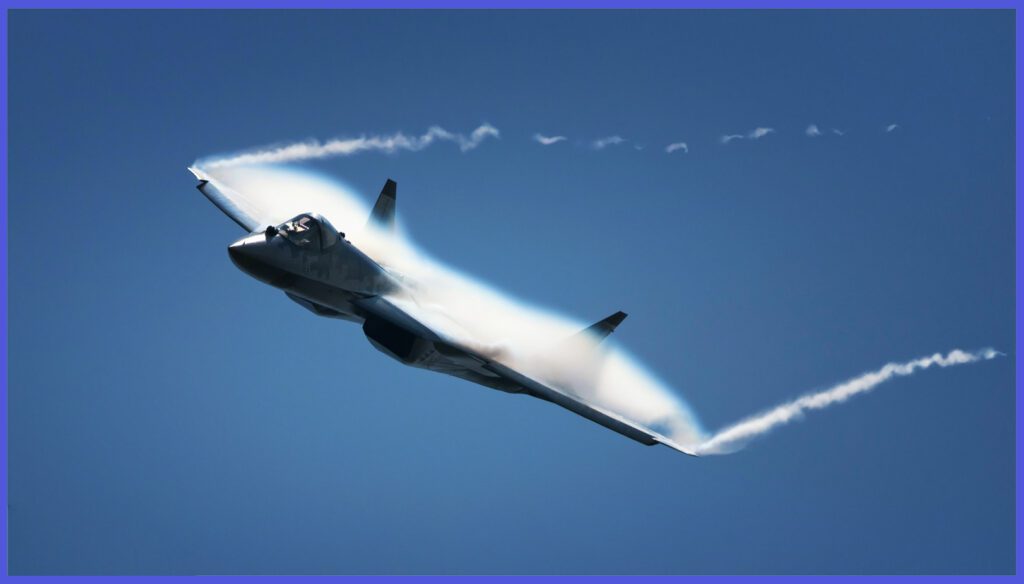
Undoubtedly, it stands as Russia’s inaugural true stealth fighter, showcasing unparalleled military aviation capabilities and serving as the cornerstone for an entire family of state-of-the-art stealth combat aircraft.
The advancement of the Su-57 signifies a notable achievement in Russia’s military aviation capabilities, extending to ground and maritime strikes. Equipped with stealth, supermaneuverability, supercruise, integrated avionics, and a significant internal payload capacity, the Su-57 is poised to surpass the MiG-29 Fulcrum and Su-27 Flanker in the Russian military arsenal. Moreover, it has been positioned for export in international markets.
The first prototype aircraft flew in 2010, showcasing advanced stealth technology, powerful engines, and a comprehensive avionics suite. Its integration of cutting-edge features and network-centric warfare capabilities has the potential to enhance operational effectiveness and provide a strategic advantage on the battlefield.

The Concept Behind The Development Of The Su-57 Felon
During the Soviet era, two subsequent projects were designed to meet the requirements of the MFI ( ‘Multifunctional Frontline Fighter Interceptor’ ) and the smaller LFI ( ‘Light’ ), with conceptual work beginning in 1983. Hence, Mikoyan was selected for the MFI program and began developing its MiG 1.44/1.42. Although not directly involved in the MFI, Sukhoi initiated its program in 1983 to develop technologies for the next-generation fighter, leading to the creation of the forward-swept wing Su-47 Berkut, an experimental aircraft.
However, following the dissolution of the Soviet Union in 1991, the MFI project faced significant financial challenges, resulting in numerous delays. It was not until the year 2000 that the MiG 1.44/1.42 prototype finally took its maiden flight, a remarkable nine years behind schedule. Unfortunately, the extensive costs associated with the experimental development led to the cancellation of both the MFI and LFI projects.
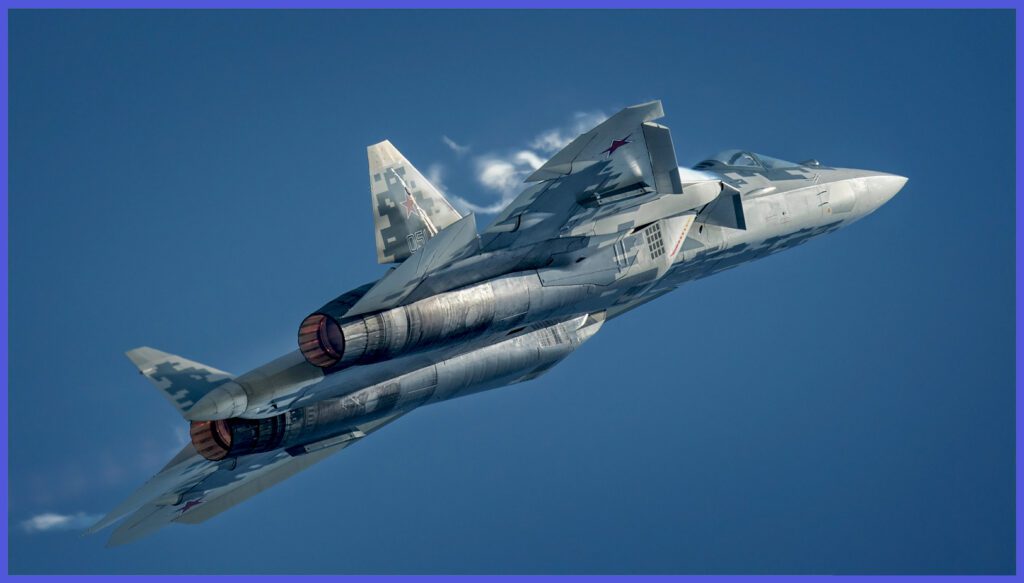
In 1999, the Russian Ministry of Defence embarked on a new next-generation fighter program known as the PAK FA program, officially announcing the competition in April 2001. The primary objective of this program was to develop a cost-effective, single multirole fifth-generation fighter capable of replacing the Su-27 and MiG-29 aircraft currently in service.
Sukhoi’s approach to the PAK FA competition was marked by a fundamental departure from Mikoyan’s strategy. While Mikoyan proposed a cooperative consortium involving three design bureaus ( Mikoyan, Sukhoi, and Yakovlev ) with the winning team leading the design effort, Sukhoi took a different stance. From the very beginning, Sukhoi positioned itself as the lead designer and presented a comprehensive joint work agreement that encompassed every aspect of the development and production cycle. This agreement spanned from collaborating with propulsions and avionics suppliers to utilizing cutting-edge research facilities.
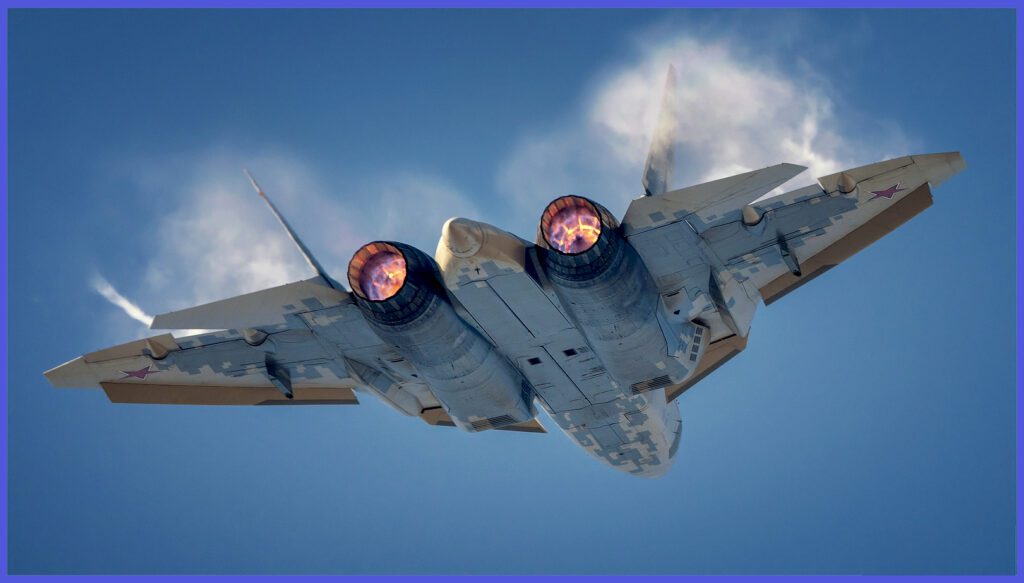
Beyond their divergent approaches to collaboration, the two companies also espoused contrasting design philosophies for the aircraft. The distinctions in their visions for the PAK FA were evident, highlighting the profound disparity in their approaches to engineering excellence and innovative design. The clash of these design philosophies further intensified the drama surrounding the fierce competition.

In 2002, Alexander Davidenko was appointed as the chief designer for the T-50 aircraft at Sukhoi. The Novosibirsk Aircraft Production Association ( NAPO ) and Komsomolsk-on-Amur Aircraft Production Association ( KnAAZ ) were selected for the manufacturing of this new multi-role fighter, with KnAAZ responsible for the final assembly in Komsomol’sk-on-Amur. In April 2004, NPO Saturn was contracted as the engine supplier for the AL-41F1 engines, which were integral to the development of the PAK-FA project.
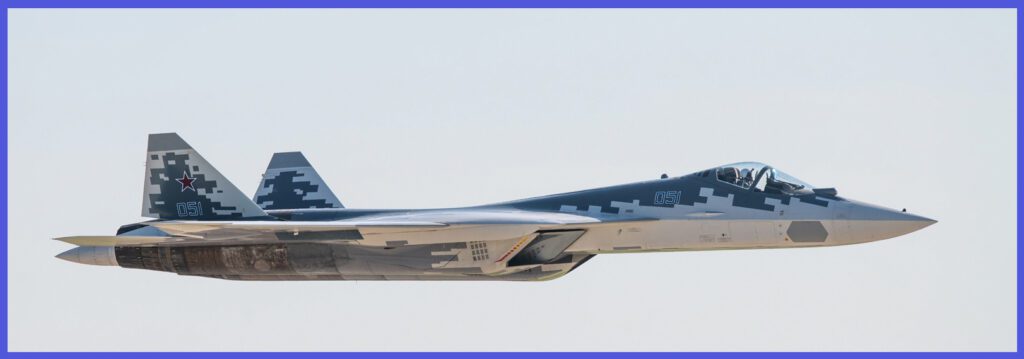
In December 2004, the T-50 aircraft’s conceptual design and shape were finalized and received official approval from the Ministry of Defence. The program secured government funding in 2005 and significant financial support was allocated in 2006 as detailed design work progressed. On 8 August 2007, Russian Air Force Commander-in-chief Alexander Zelin publicly announced the successful completion of the development stage, marking the beginning of construction for the first aircraft designated for flight testing.
The ambitious plan included the production of three operational T-50 prototypes by 2009. In 2009, the aircraft’s design was officially approved, cementing its progress. Finally, in July 2017, the T-50 was officially rebranded as the Su-57, reflecting its advanced capabilities and enhanced features.

The Failed Partnership Between India And Russia For Su-57, PAK-FA Project
Since the initiation of the PAK FA program, Russia actively sought foreign partnerships to augment development funding and secure significant export orders. On 18 October 2007, a contract was forged between Russia and India, facilitating collaboration between Sukhoi and Hindustan Aeronautics Limited ( HAL ) for the joint development of a derivative of the PAK FA, known as the Fifth Generation Fighter Aircraft ( FGFA ). In September 2010, both nations reached an agreement on a preliminary design contract, with each side committing $6 billion in investment.
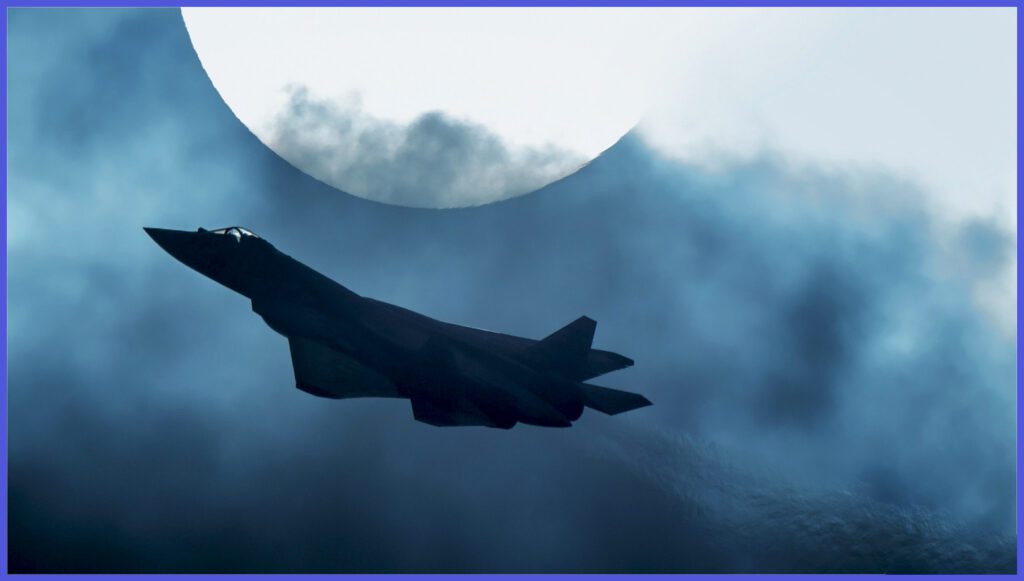
Subsequently, in December 2010, a memorandum of understanding for the preliminary design was duly signed, outlining a projected development timeline of 8-10 years for the FGFA. However, by 2014, concerns surfaced within the Indian Air Force about performance, cost, and workshare arrangements. After a thorough evaluation, India concluded that the aircraft did not meet its specific requirements, leading to its eventual withdrawal from the partnership in 2018.

The Further Developments Of The Su-57: Introducing a Lighter Version
Sukhoi has capitalized on the technological advancements achieved through the Su-57 program to embark on the development of an economically lightweight single-engine aircraft, known as the LTA ( Light Tactical Aircraft ). This latest endeavour was showcased at the prestigious 2021 Moscow Air Show ( MAKS-2021 ), where Sukhoi unveiled the Checkmate, an impressive mockup representing the LTA concept.
Drawing inspiration from its Su-57 predecessor, the Checkmate incorporates several essential systems, including radar capabilities, a main weapons bay, vertical stabilizers, and wings. By seamlessly integrating these shared technologies, Sukhoi demonstrates its unwavering commitment to optimizing efficiency, cost-effectiveness, and, most importantly, delivering state-of-the-art performance.

The United Aircraft Corporation ( UAC ) made an official announcement regarding the successful inaugural flight of an upgraded Su-57 aircraft on October 21, 2022. While the precise classification of this airframe as the Su-57M variant is yet to be confirmed, the significance of this milestone flight cannot be understated. Renowned Russian test pilot Sergey Bogdan skillfully commanded the aircraft during this noteworthy mission. Moreover, continuous endeavours are underway to engineer a specialized variant of the Su-57 that can seamlessly operate on aircraft carriers, underscoring the program’s commitment to sustained progress, technological advancements, and enhanced adaptability.
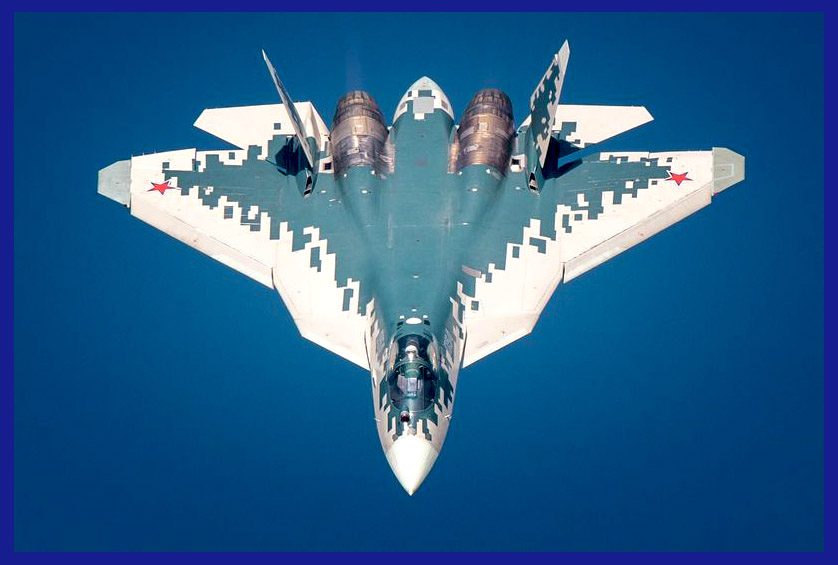
Unlocking the Design Mastery of the Su-57 Felon
The Su-57 Felon boasts a wide blended wing body fuselage design, featuring two engines that are strategically positioned with ample spacing. It incorporates all-moving horizontal and vertical stabilizers, specifically designed with stealth in mind. The trapezoid wings are equipped with leading-edge flaps, ailerons, and flaperons to enhance aerodynamic performance.
To further optimize manoeuvrability, the aircraft employs thrust vectoring and large leading edge root extensions, which effectively shift the aerodynamic centre forward, resulting in increased static instability. Notably, these extensions are equipped with adjustable leading-edge vortex controllers ( LEVCONs ) that play a vital role in managing the generated vortices. Additionally, they offer trim control and significantly improve the aircraft’s behaviour at high angles of attack, ensuring a quick recovery from stalls even in the event of thrust vectoring system failure.

When it comes to air-braking, the ailerons deflect upwards, while the flaperons deflect downwards, and the vertical stabilizers toe inward, effectively augmenting drag. While the aircraft predominantly utilizes alloys, with aluminium alloys accounting for 40.5-44.5% and titanium alloys for 18.6%, it also extensively incorporates composites. Composites make up approximately 22-26% of the aircraft’s structural weight and constitute roughly 70% of its outer surface material.
Engineered as an exceptional multirole aircraft right from its inception, the Su-57 showcases an impressive internal payload capacity, allowing for the simultaneous carriage of a multitude of substantial air-to-surface ordnance. To accommodate this formidable arsenal, the aircraft features two tandem main weapons bays strategically positioned in the expansive ventral volume nestled between the widely spaced engine nacelles. Complementing these primary bays, smaller side bays, accentuated by bulged triangular-section fairings near the wing root, provide supplementary storage capabilities.

This ingenious utilization of internal weapons carriage serves a dual purpose _ eliminating the drag typically associated with external stores and consequently enhancing overall performance when compared to external carriage alternatives. Moreover, this internal configuration seamlessly aligns with the aircraft’s stealth-shaping objectives, thereby ensuring optimum stealth capabilities while delivering unparalleled power on the battlefield.
The Su-57 encompasses an extraordinary level of static instability, also known as relaxed stability, in both pitch and yaw, further amplified by the advanced KSU-50 flight control system. This exceptional combination, along with the presence of canted thrust vectoring nozzles, endows the aircraft with remarkable departure resistance and unparalleled manoeuvrability across all axes. It empowers the Su-57 to execute highly demanding manoeuvres involving very high angles of attack, such as the renowned Pugachev’s Cobra and the bell manoeuvre. Additionally, the aircraft exhibits exceptional flat rotation capabilities with minimal altitude loss.

The aerodynamics and engines of the Su-57 enable it to attain speeds of Mach 2 and achieve supersonic flight without the use of afterburners, a capability known as supercruise. This not only provides a substantial kinematic advantage but also extends the effective range of missiles and bombs compared to previous generations of aircraft.
When coupled with its high fuel load, the fighter boasts a supersonic range exceeding 1,500 km ( 930 mi ), more than double that of its predecessor, the Su-27. To further augment its range, the Su-57 is equipped with an extendable refuelling probe, further emphasizing its operational versatility and endurance.
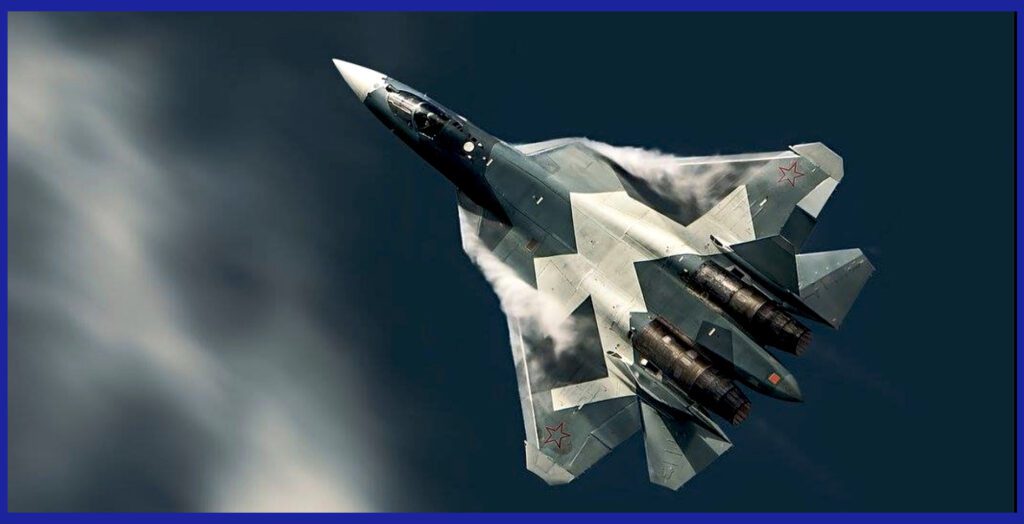
Dissecting the Secrets: Unraveling the Stealth Components of the Su-57 Felon
The Su-57 incorporates a diverse range of techniques to minimize its radar signature, establishing it as the first Russian military aircraft to prioritize stealth capabilities. Following in the footsteps of other stealth fighters like the F-22 Raptor, the aircraft meticulously aligns its planform edges to diminish its radar cross-section ( RCS ). The leading and trailing edges of the wings and control surfaces, along with the serrated edges of the skin panels, are purposefully angled to reduce the number of radar wave reflections.
To maintain its stealthy profile, the Su-57 internally carries its weapons in dedicated weapons bays within the airframe. Antennas are recessed below the skin surface, preserving the aircraft’s sleek and stealthy shape. Radar absorbent material ( RAM ) coatings are strategically applied to absorb radar emissions, effectively minimizing the radar reflection back to the source.
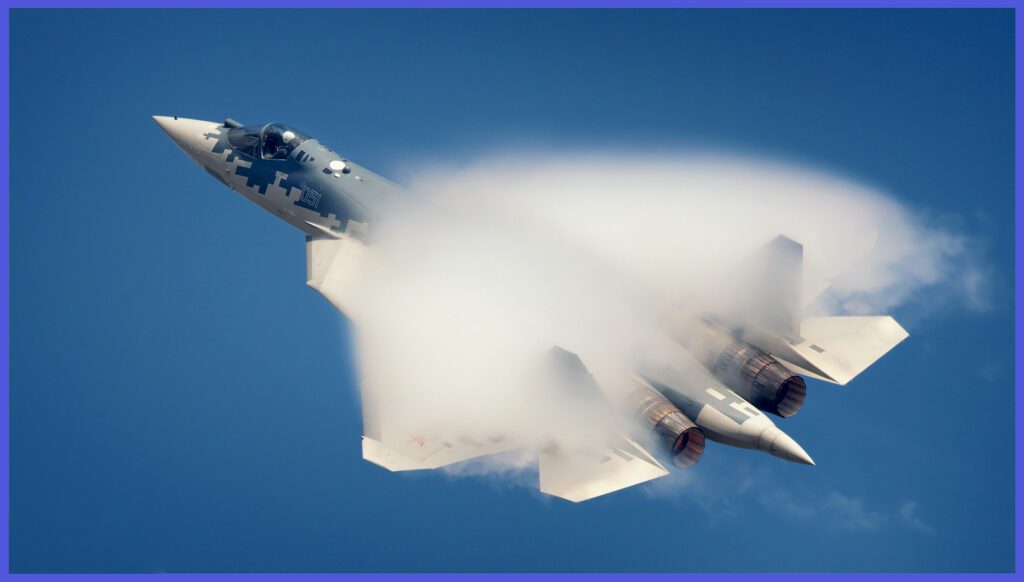
The aircraft incorporates a backwards-facing infrared search-and-track sensor housing, which is treated with radar absorbent material ( RAM ) to further enhance its stealth capabilities. In order to address the significant radar cross-section ( RCS ) contribution from the engine face, the walls of the inlet ducts are coated with RAM. Additionally, partial serpentine ducts effectively obscure a significant portion of the engine’s compressor face and inlet guide vanes ( IGV ).
To shield the remaining exposed engine face, a slanted blocker grid is positioned in front of the IGV at a distance ranging from 0.6 to 1.2 times the diameter of the duct. This methodology draws similarities to the technique employed in the Boeing F-18 Super Hornets.

Furthermore, the aircraft canopy is coated with metal oxide layers, measuring 70–90 nm in thickness, which possess enhanced radar wave absorption properties. This coating reduces the radar return of the cockpit by approximately 35% while also safeguarding the pilot from ultraviolet and thermal radiation.
Notably, the Su-57 Felon exhibits stringent production tolerances, surpassing those of previous Russian fighters, to significantly enhance its stealth characteristics. These meticulous standards further contribute to the aircraft’s overall stealth performance.

The incorporation of an optimized airframe shape and the integration of radar absorbent material ( RAM ) into the production aircraft have resulted in a substantial reduction in the Su-57’s radar cross-section ( RCS ), estimated to be thirty times smaller than that of the Su-27. Sukhoi’s patent for the T-50 stealth features explicitly outlines the objective of achieving an average RCS ranging from approximately 0.1 to 1 m², a remarkable improvement compared to the Su-27’s RCS, which typically ranges from approximately 10 to 15 m².
The design philosophy of the Su-57 places a strong emphasis on frontal stealth, with notable features strategically implemented to minimize RCS in the forward hemisphere. However, it is worth noting that the shaping of the aft fuselage is comparatively less optimized for radar stealth when compared to American stealth designs such as the F-22 and F-35. This difference in design approach can be attributed to a combination of factors, including cost reduction considerations and the Russian doctrine of operating the aircraft within the protective coverage of integrated air defence systems.
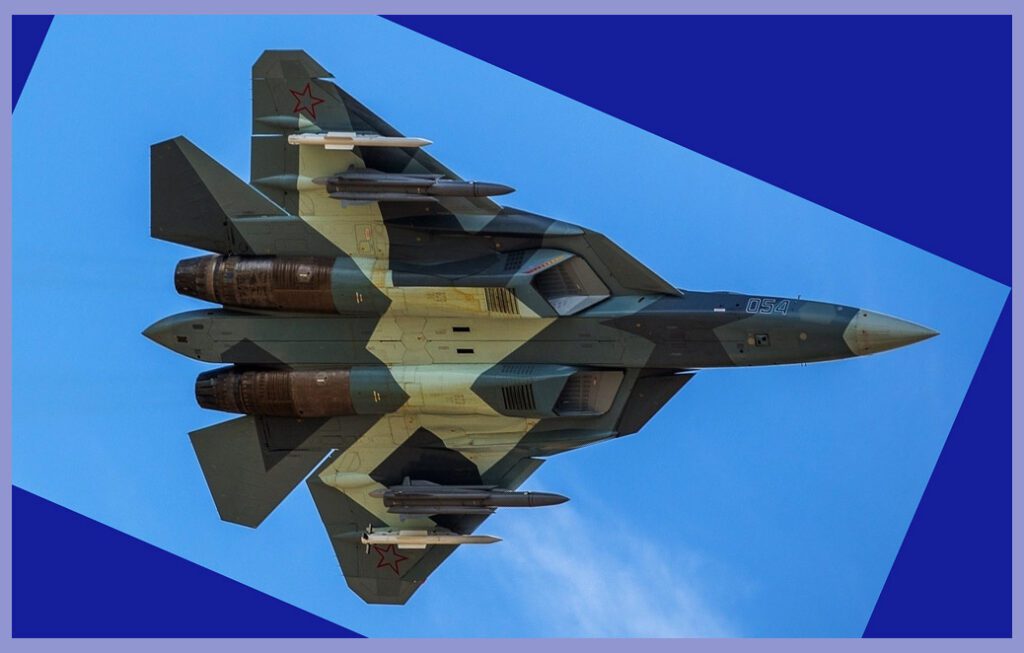
Propulsion Prowess: Deciphering the Engine of the Su-57 Felon
The Su-57 is equipped with a pair of NPO Lyulka-Saturn AL-41F1 augmented turbofans, serving as its power source. These engines represent a significant advancement and enhancement of the AL-31 variant. They generate 9 tonnes ( 19,840 lbs ) of dry thrust, 14.5 tonnes ( 31,970 lbs ) of thrust in afterburner mode, and an impressive 15 tonnes ( 33,070 lbs ) of thrust in “special” emergency power situations.

Featuring the advanced technology of full authority digital engine control ( FADEC ), the engines of the Su-57 seamlessly integrate into its flight control system, optimizing the aircraft’s manoeuvrability and handling characteristics. The AL-41F1 engine shares a significant resemblance to the powerplant employed in the Su-35S, showcasing a close relationship between the two.
To enable thrust vector control ( TVC ), the Su-57 incorporates canted vectoring nozzles, where each nozzle’s rotational axis is deliberately inclined at an angle. This particular nozzle arrangement, initially introduced in the Indian Su-30MKI and subsequently utilized in the Su-35S, plays a vital role in facilitating roll and yaw moments by differentially vectoring each nozzle. As a result, the aircraft attains the ability to generate thrust vectoring moments across all three aircraft axes: pitch, yaw, and roll.

The engine inlet of the Su-57 is equipped with variable intake ramps, specifically designed to enhance supersonic efficiency. These innovative intake ramps play a crucial role in optimizing the aircraft’s performance during supersonic operations.
Additionally, the Su-57 incorporates retractable mesh screens within its engine inlet. These screens serve as a protective measure, effectively safeguarding the engine from potential damage resulting from the ingestion of foreign object debris. This feature proves especially valuable when operating on short and austere runways, ensuring the engine remains protected and fully functional under challenging conditions.

The upcoming Su-57M, scheduled for release in the mid-2020s, will be equipped with a new engine developed by NPO Saturn, carrying the designation izdeliye 30. This advanced engine is meticulously designed to deliver enhanced performance, boasting an estimated thrust of 11 tonnes ( 24,300 lbs ) in dry mode and 17.5 tonnes ( 38,600 lbs ) in afterburner mode.
Apart from its superior performance attributes, the new engine offers improved reliability and cost-efficiency compared to its predecessor, the AL-41F1. Notably, the izdeliye 30 engine incorporates innovative features to reduce the aircraft’s radar and infrared signature. These include the utilization of glass-fibre plastic inlet guide vanes ( IGVs ) and a novel nozzle equipped with serrated flaps. By integrating these advancements, the Su-57M will benefit from reduced detectability, enhancing its overall stealth capabilities.
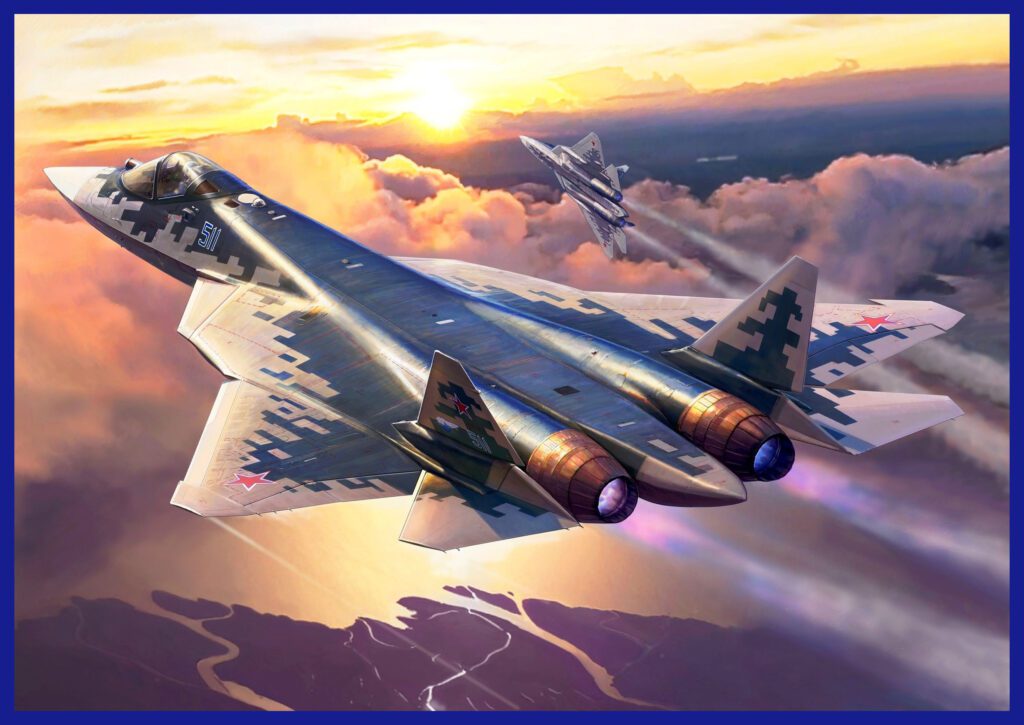
Hidden Arsenal: Exploring the Internal Weapon Bay Capacity of the Su-57 Felon
The Su-57 boasts the remarkable configuration of two tandem main internal weapon bays, showcasing their impressive dimensions, with each bay stretching approximately 14.4 ft in length and spanning 3.0 ft in width. Furthermore, this advanced fighter aircraft incorporates two side weapon bays, strategically positioned beneath the fuselage near the wing root, ingeniously equipped with triangular section fairings.
To ensure peak performance, the esteemed aerospace company Vympel has ingeniously designed two types of ejection launchers specifically for the main bays: the UVKU-50L, tailored for efficiently deploying missiles weighing up to 300 kg (660 lb), and the UVKU-50U, meticulously crafted to facilitate the effective release of ordnance weighing up to 700 kg (1,500 lb). To enhance the combat capabilities of the Su-57 to the fullest extent, the side bays utilize the highly effective VPU-50 launch rails.

In terms of air-to-air combat capabilities, the Su-57 is equipped with four beyond-visual-range missiles in its two main weapons bays, along with two short-range missiles in the side bays. The primary medium-range missile utilized is the R-77M, featuring active radar-homing capabilities, an AESA seeker, a dual-pulse motor, and conventional rear fins. The short-range missile employed is the R-74M2, an upgraded variant of the R-74 with a reduced cross-section to enable internal carriage. Additionally, a new short-range missile designated as the K-MD is currently being developed as a clean-sheet design to eventually replace the R-74M2.
For longer-range applications, the Su-57 can carry the izdeliye 810 missile, which is a further development of the R-37M. The aircraft can accommodate two of these missiles in each of its main weapon bays, providing extended-range capabilities.
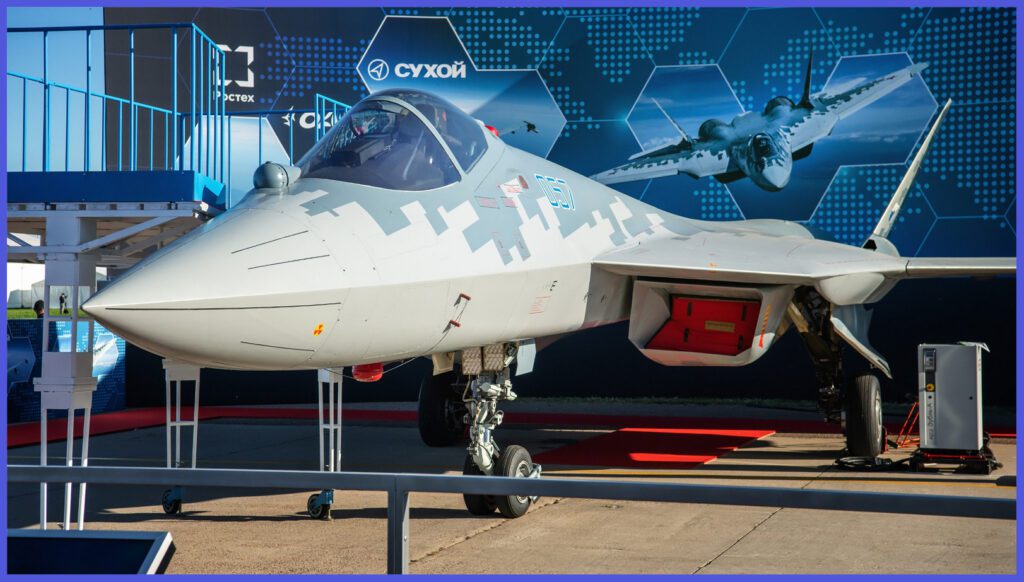
For devastating surface targets, the aircraft showcases its capability to carry the formidable 250 kg (550 lb) KAB-250 or the mighty 500 kg (1,100 lb) KAB-500 precision-guided bombs within its main bays. The internal armament array extends to include the versatile Kh-38M air-to-ground missile, the fearsome Kh-35U ( AS-20 “Kayak” ) anti-ship missile, the relentless Kh-58UShK ( AS-11 “Kilter” ) anti-radiation missile, and the lethal Kh-59MK2 cruise missile. In missions where stealth is not a requirement, the Su-57 demonstrates its versatility by carrying additional ordnance on its six external hardpoints, allowing for the utilization of a wide range of Russian tactical fighter weapons.
Moreover, the development of a new hypersonic missile, boasting characteristics akin to the indomitable Kh-47M2 Kinzhal ALBM, is currently underway for integration with the Su-57. Notably, this cutting-edge missile is designed to be accommodated internally within the Su-57’s main bays, exhibiting compact dimensions alongside its awe-inspiring speed.

The Su-57 Felon’s: History Of Operations As Of 2023
Russian military action in Syria
On February 21, 2018, two Su-57s conducted their inaugural international flight when they were observed landing at the Russian Khmeimim air base in Syria. These aircraft were deployed alongside four Sukhoi Su-35 fighters, four Sukhoi Su-25s, and one Beriev A-50 AEW&C aircraft. Three days later, an additional two Su-57s were reportedly deployed to Syria. On May 25, 2018, the Defense Ministry revealed that during the February 2018 deployment in Syria, a Su-57 successfully launched a cruise missile in combat, most likely the Kh-59MK2.
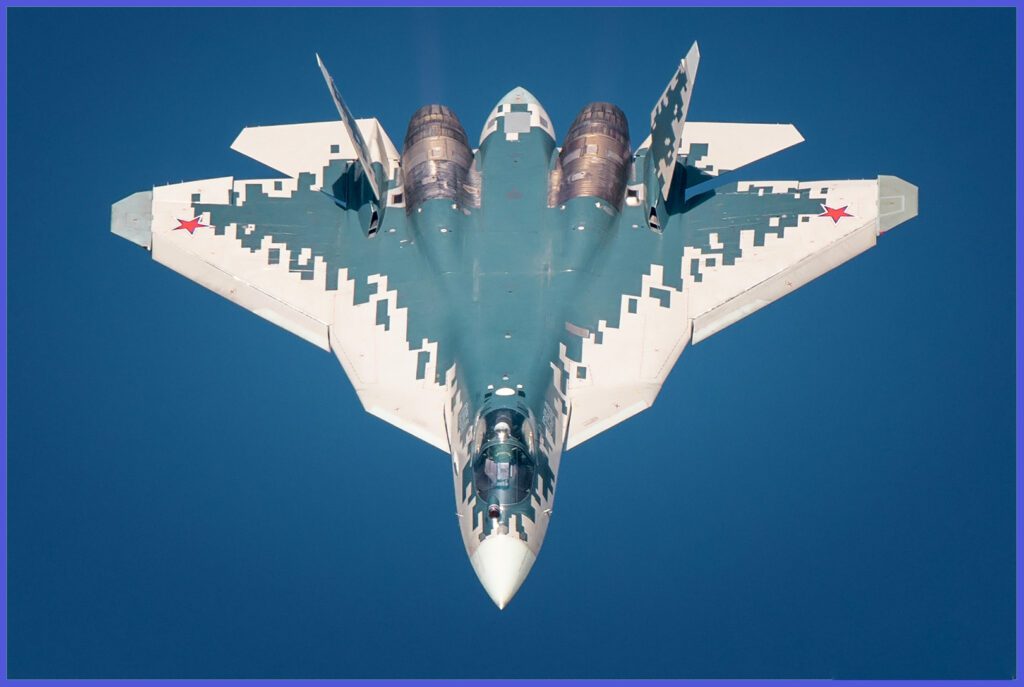
Russian military action in Ukraine in 2022
In May 2022, as per Russian reports, Su-57 fighters were said to have been deployed two or three weeks after the start of the 2022 Russian invasion of Ukraine. They conducted strikes on targets using missiles beyond the range of Ukrainian air defences, similar to other Russian aircraft mainly operating within Russian airspace.
In June 2022, RIA Novosti reported that four Su-57s, operating in a network, were utilized in the Suppression of Enemy Air Defenses ( SEAD ) role over Ukraine. Their objective was to identify and neutralize Ukrainian air defence systems. The source also highlighted the aircraft’s demonstrated effectiveness in combat due to its low radar visibility.

On October 19, 2022, Russian Army General Sergey Surovikin, the commander of all Russian Armed Forces in Ukraine, claimed that the Su-57 had been employed in both air-to-air and air-to-ground roles during the war in Ukraine. Furthermore, he asserted that the aircraft had achieved successful engagements and scored kills in both roles. Subsequently, some Russian sources alleged that the Su-57 had shot down a Ukrainian Su-27 using a long-range R-37 missile.
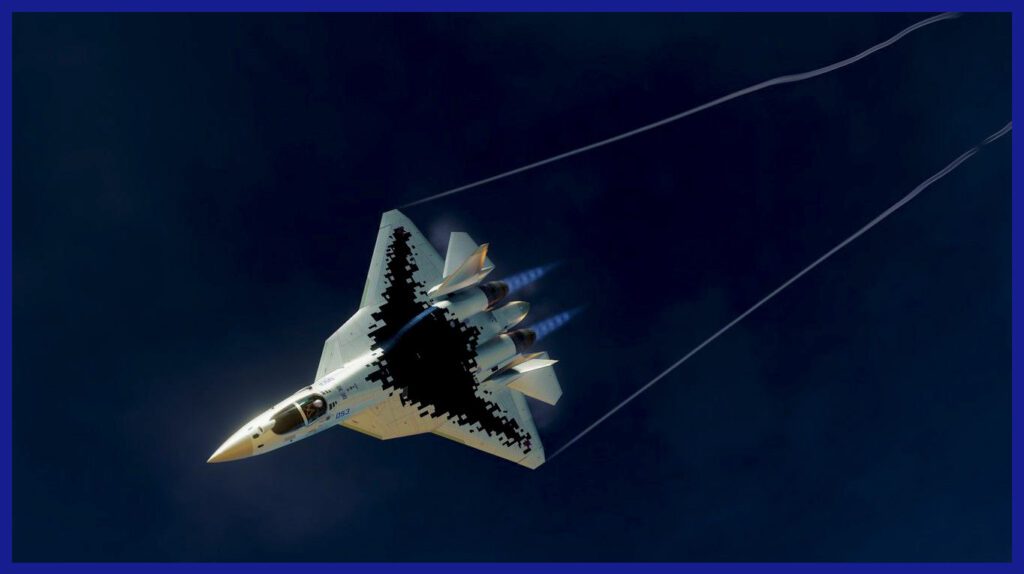
The Sukhoi Su-57 Felon Technical Specifications
- Crew: 1
- Length: 65 ft 11 in ( 20 m )
- Wingspan: 46 ft 3 in ( 14 m )
- Height: 15 ft 1 in ( 4.6 m )
- Empty Weight: 18,000 kg ( 39, 683 lb )
- Max Takeoff Weight: 35,000 kg ( 77,162 lb )
- Fuel Capacity: 10,300 kg ( 22,700 lb )
- Payload: Estimated internal capacity 4,000 kg ( 8,818 lb ) and total with external hardpoints, without stealth mode: 8,000 kg ( 17,636 lb )
- Powerplant: 2 × Saturn AL-41F1 afterburning turbofan, 88.3 kN ( 19,900 lb ) thrust each dry, 142.2 kN ( 32,000 lb ) with afterburner, 147.1 kN ( 33,100 lb ) in emergency power
- Max Speed: Mach 2 ( 2,135 km/h ) and on Supercruise Mach 1.3
- Combat range: 3,500 km ( 2,200 mi ) at subsonic speed and ( without Stealth ) 4,500 km with 2 outboard fuel tanks
- g limits: +9
- Service ceiling: 66,000 ft ( 20,000 m )
- Rate Of Climb: Estimated 300 m/s ( 59,000 ft/min )
- Armament: 1 × 30 mm Gryazev-Shipunov GSh-30-1 autocannon,
The Su-57 is equipped with a total of 12 hardpoints ( 6 × internal, 6 × external ), capable of carrying different combinations of guided missiles. These hardpoints have a maximum payload capacity of up to 8,000 kg ( 17,636 lb ), allowing for the transportation of various combinations of Updated munitions such as R-27, R-73, R-77, R-37 air-to-air missile / Kh-29, Kh-31, Kh-35, Kh-58, Kh-59 air-to-surface missile / KAB-500 and KAB-1500 series laser-guided bombs.

Moreover, do not miss the opportunity to acquire an exquisite, large-scale 1/72 premium diecast model of the Su-57 Felon fighter jet, the first Russian stealth aircraft. It is now conveniently available on Air Models. Click here to access this remarkable aircraft. Renowned for its devastating capabilities in combat, the Su-57 exemplifies the unwavering dedication of the Russian military to cutting-edge technology and meticulous precision in warfare.

In conclusion, the Sukhoi Su-57, also known as the Felon, epitomizes Russia’s formidable fifth-generation fighter aircraft. It showcases an awe-inspiring fusion of stealth technology, advanced avionics, and an adaptable weapon system. With its internal weapon bays, this aerial marvel ensures an undetectable presence while unleashing a diverse array of missiles and bombs. Boasting a robust maximum takeoff weight, the Su-57 possesses an unparalleled capacity to bear a substantial armament load, bolstering its combat prowess. Its state-of-the-art capabilities and unparalleled agility position the Su-57 as an indomitable force, poised to counter emerging threats and assert unchallenged air superiority.
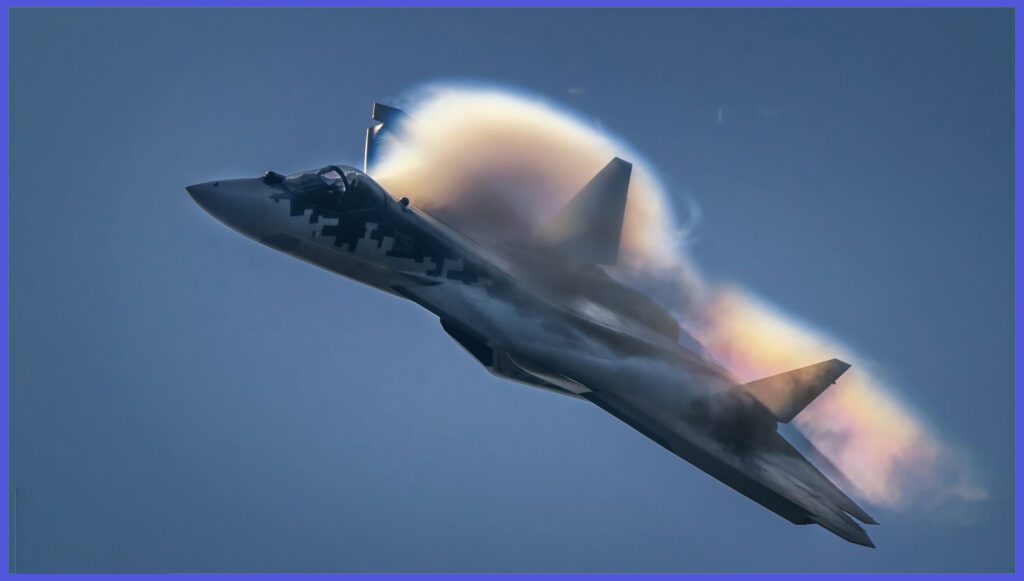
Important Announcement for Our Valued Readers!
After an article is published, updates or changes may have occurred beyond the time of publication. Therefore, it is important to be aware that certain information in the article might be outdated. To ensure the most accurate analysis, it is highly recommended to verify the content with the latest sources available.
However, we are dedicated to delivering outstanding articles on military products and global updates. Maintaining quality and smooth operation requires resources. Your support sustains our efforts in providing insightful content. By purchasing high-quality products through our affiliated links, you help us keep our platform alive and acquire top-notch items. Your unwavering support is invaluable and inspires us to strive further.
We welcome your suggestions and requests for more information, as we value feedback from our readers. If there’s specific defence material or equipment not covered on our site, please share your request in the comments. We’ll strive to research and provide the required information. We sincerely thank you for your unwavering interest in our website, and we eagerly anticipate hearing from you! Enjoy your reading experience!